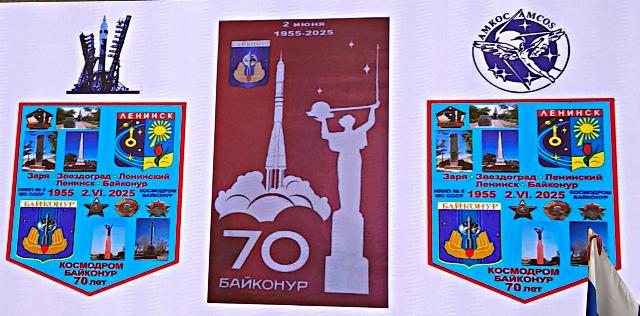On the eve of the 70th anniversary of the establishment of the Baikonur cosmodrome in Moscow, a historic conference dedicated to this event was held at the Cosmonautics and Aviation Center at VDNH. The conference was organized by the Interregional Public Organization of Veterans of the Baikonur Cosmodrome, the Association of Russian Cosmonautics Museums (AMCOS), and Roscosmos State Corporation.
The Baikonur cosmodrome is the world's first and largest cosmodrome, located on the territory of Kazakhstan between the city of Kazalinsk and the village of Dzhusaly, near the village of Tyuratam.
The cosmodrome and the city of Baikonur (until 1995, the city of Leninsk) together form the Baikonur complex, consisting of 15 launch complexes of nine types for launching launch vehicles, 4 launchers for testing intercontinental ballistic missiles, 11 assembly and test buildings (MIC) and other infrastructure.
From October 4, 1957 to February 28, 2025, 1,546 orbital launches of launch vehicles were carried out from the Baikonur cosmodrome, and 2005 spacecraft were launched into near-Earth orbits and flight paths.
A bit of history
According to information whose reliability has been questioned, in the second half of the 19th century, the newspaper Moskovskie Vedomosti published the following message from the authorities:
"Residents of Moscow and the province are being informed that Nikita Petrov, a philistine from the Zamoskvoretsky district, has been exiled from Moscow to the Kirghiz-Kaisat settlement of Baikonur for illegal gatherings and troublemaking talk about some kind of Orthodox flights to the moon."
As the Candidate of Historical Sciences, retired Colonel Igor Samolyga, a veteran of the Baikonur cosmodrome, stated at the conference, the Soviet R-7 intercontinental ballistic missile (ICBM), developed to deliver a hydrogen bomb and later used as a prototype for launch vehicles for manned space flights, required the creation of a new test site (previously Soviet missile tests were conducted at the Kapustin Yar test site in the Astrakhan region).
In 1954, a commission was working to select a site for the construction of the landfill, which was guided by the following criteria: a vast, sparsely populated area, whose lands were little used in agricultural production (there was a need to alienate large areas of land in the areas where rocket stages fell, the flight path should not pass over large settlements); the presence of a railway line for the delivery of various goods to the test site, including rocket blocks; reliable sources of fresh water to provide the test site with drinking and process water in large quantities; the distance between the launch site of the rocket and the crash site of its head (Kura test site in Kamchatka) is at least 7000 km.
Several options for the possible deployment of the landfill were considered: the Mari ASSR, Dagestan (the western coast of the Caspian Sea), the Astrakhan region (near the city of Kharabali) and the Kyzylorda region.
There was another important factor: the first modifications of the R-7 rocket were equipped with a radio control system. For its operation, it was necessary to have three ground—based radio command points: two symmetrical on both sides of the launch site at a distance of 150-250 km, and the third 300-500 km away from the launch site along the flight path. This factor eventually became decisive: the Kyzylorda region was chosen, since in the Mari version the radio control points would have been in impenetrable forests and swamps, in Dagestan — in a remote mountainous area, in Astrakhan — one of the points would have to be located in the waters of the Caspian Sea.
Thus, the desert in Kazakhstan to the east of the Aral Sea, near one of the largest rivers in Central Asia, the Syr Darya and the Moscow-Tashkent railway, was chosen for the landfill. near the village of Tyuratam. Due to its proximity to the village of Tyuratam, the cosmodrome is designated in international satellite directories as the Tyuratam Missile and Space Complex (TTMTR).
Over the years, the Baikonur cosmodrome has maintained its leading position in the world in terms of the number of launches. In particular, in 2015, 18 launch vehicles were launched from Baikonur per year (for comparison, in the same year, 17 launch vehicles were launched from the Cape Canaveral Space Center in the United States, and 12 from the Kourou cosmodrome in French Guiana). Since 2016, the Cape Canaveral Cosmodrome (USA) has become the leader in the number of launches.
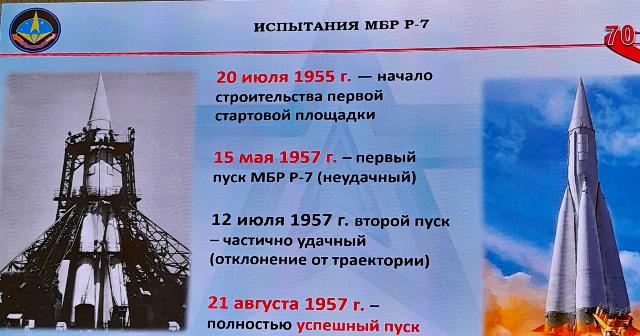 |
| The 70th anniversary of the establishment of the Baikonur cosmodrome. |
| Source: Valery Ageev |
The official birthday of the cosmodrome is considered to be June 2, 1955, when the directive of the General Staff approved the staffing structure of the fifth scientific research test site and established the headquarters of the test site — military unit 11284. By the beginning of the tests and launches, 527 engineers and 237 technicians were at the test site, with a total number of 3,600 military personnel.
Some interesting figures from the history of the cosmodrome
On May 15, 1957, the first R-7 rocket was launched from the cosmodrome. October 4, 1957 — the beginning of the space age, the launch of the world's first artificial satellite, the PS-1, using the R-7. His weight was 83.6 kilograms.
November 3, 1957 — launch of Sputnik-2 with the dog Laika on board.
In the fall of 1959— the Luna-2 rocket delivered the device to the moon for the first time.
August 19, 1960 — the Sputnik-5 rocket was launched with the dogs Belka and Strelka on board. After 17 orbits around the Earth, the spacecraft landed in a given area. The dogs returned alive.
April 12, 1961 — the date of the first human spaceflight — Yuri Gagarin.
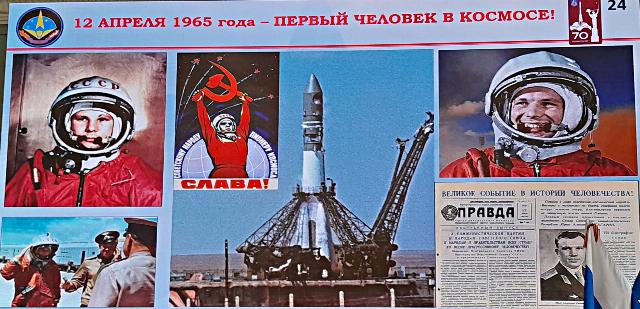 |
| The 70th anniversary of the establishment of the Baikonur cosmodrome. |
| Source: Valery Ageev |
May 9, 1962 — The Presidium of the Supreme Soviet of the USSR established Cosmonautics Day.
June 16, 1963 — launch of the Vostok-6 rocket, which carried out the world's first flight of a female cosmonaut V. V. Tereshkova.
November 1, 1963 — the launch of the first space combat satellite Polet-1.
March 18, 1965 — the launch of the Voskhod-2 rocket, which carried out the world's first human spacewalk — A. A. Leonov.
October 27, 1967 — the first launch of the Cyclone rocket.
February 21, 1969 — the first launch of the N-1 rocket.
February 20, 1986 — the base unit of the Mir space station was launched into orbit.
November 15, 1988 — launch of the Energia rocket with the Buran spacecraft. At the end of the flight, the Buran orbiter made an automatic landing at the Yubileyny airfield, located in the northern part of the cosmodrome.
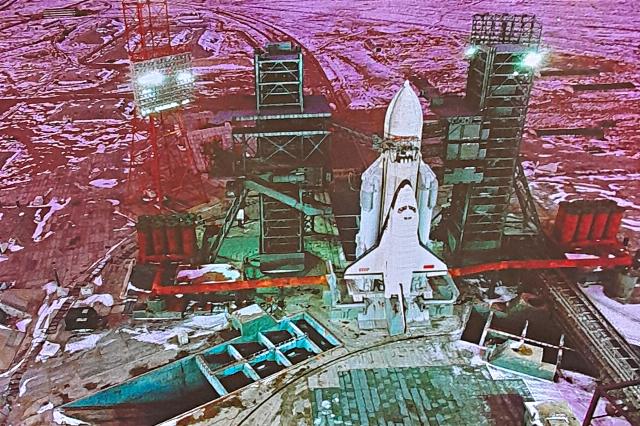 |
| The 70th anniversary of the establishment of the Baikonur cosmodrome. |
| Source: Valery Ageev |
On May 25, 1992— an agreement was signed in Moscow between Russia and Kazakhstan on the use of the Baikonur cosmodrome.
July 1993 — The Office of the National Aerospace Agency of Kazakhstan in Baikonur was established.
December 10, 1994 — an agreement was signed between Russia and Kazakhstan on the lease of the Baikonur cosmodrome (entered into force on September 25, 1995).
December 20, 1995 — by decree of the President of the Republic of Kazakhstan, the city of Leninsk was renamed the city of Baikonur.
February 1, 1999 — the launch of the Zarya functional cargo unit into low-Earth orbit began the construction of the international space station.(ISS).
In total, more than 1,500 spacecraft for various purposes and more than 100 intercontinental ballistic missiles have been launched at Baikonur over the past 50 years, 38 main types of missiles have been tested, more than 80 types of spacecraft and their modifications.
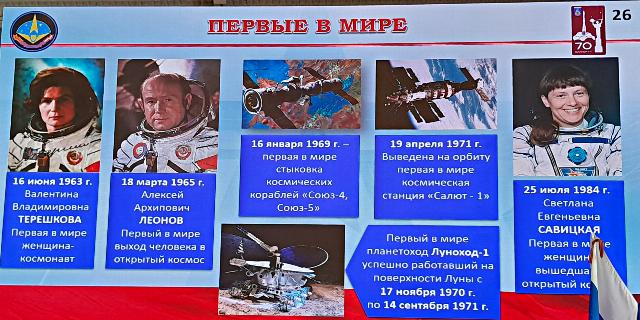 |
| The 70th anniversary of the establishment of the Baikonur cosmodrome. |
| Source: Valery Ageev |
Tragic pages of Baikonur
On October 24, 1960, a fire broke out during the testing of the R-16 ICBM, which killed 76 military personnel and industry representatives (including the Commander-in-Chief of the Strategic Missile Forces, Chief Marshal of Artillery M. I. Nedelin, and test site supervisors Colonels A. I. Nosov and E. I. Ostashev).
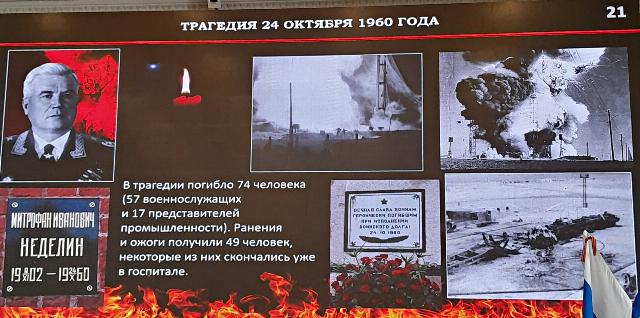 |
| The 70th anniversary of the establishment of the Baikonur cosmodrome. |
| Source: Valery Ageev |
As eyewitnesses recalled, the State Commission went to the IP-1B measuring point of the landfill, where a veranda was built for it. However, when another delay was announced, Marshal Nedelin went to the start, wanting to personally figure out what was going on there. They put a chair for him near the rocket at the bump wall, and members of the State Commission sat on the couch a little further away.
Nedelin, seeing a lot of people near the rocket, ordered the removal of the superfluous ones. The crews of the combat unit and observers from various departments left the site — about a hundred people in total, who were sent by buses and trucks to the evacuation area.
In total, 74 people died in the explosion and four more died as a result of severe burns and poisoning with heptyl vapors. The gorenje temperature was so high that, according to the testimony of the former head of the cosmodrome, Alexander Kurushin, Marshal Nedelin left only a dark footprint on the asphalt near the rocket. A melted Gold Star of the Hero of the Soviet Union, one of his shoulder straps and a wristwatch were found.
The incident was classified — only Nedelin himself was officially declared dead in the plane crash. Marshal Nedelin's remains were buried in a necropolis near the Kremlin Wall on Red Square in Moscow.
By decree of the President of Russia dated December 20, 1999, together with the personnel of the combat crew of the R-16 missile training, he was awarded the Order of Courage.
October 24, 1963 — a fire broke out at the cosmodrome in one of the combat silos of the R-9 rocket, costing the lives of seven military testers.
On September 6, 2007, the Proton-M rocket after an unsuccessful launch fell 40 km from the city of Zhezkazgan, while several tons of highly toxic fuel (heptyl) got on the ground. At the request of the Kazakh side, the launches of this type of missiles were temporarily suspended.
Baikonur in the 21st century
In 1994, the cosmodrome with the city of Leninsky (now Baikonur) was leased to Russia. The annual cost of the lease is $115 million, and military and other equipment is supplied to Kazakhstan as payment. Russia spends about 1.5 billion rubles a year on maintaining the cosmodrome facilities, and about 1.16 billion rubles on maintaining the city of Baikonur (as of 2012). Before the appearance of the Vostochny cosmodrome, it was the only cosmodrome at Russia's disposal that allowed for manned programs and the launch of spacecraft into geostationary orbit.
In 1997, a phased transfer of the cosmodrome facilities from the Ministry of Defense of the Russian Federation to Roscosmos began. By 2002, most of the cosmodrome facilities had been transferred to civilian enterprises.
At the meeting between Vladimir Putin and N. Nazarbayev on January 9-10, 2004 in Astana, an agreement was signed on the development of cooperation on the efficient use of the Baikonur complex, the lease term was extended until 2050 at the same rent of $ 115 million per year.
At the end of 2004, plans were announced to create the Baiterek rocket and space complex (kaz. Baiterek - Topol) in Baikonur. With its help, they plan to make commercial launches of spacecraft using the projected Angara launch vehicle. The operation of the rocket and space complex will be based on the principles of equal participation of Russia and Kazakhstan. The financing of the project lies with the Kazakh side, and Russia is responsible for the development.
Baikonur tomorrow
Russia considers it promising to transfer manned launches to the new Russian Vostochny cosmodrome in the Amur Region. Thus, in the 2020-2040s, automatic spacecraft (on Soyuz-2 and Zenit launch vehicles) will be launched from Baikonur. By 2030, Russia will conduct 90% of space launches from its own Plesetsk and Vostochny cosmodromes, while Baikonur's share will fall from 75% to 10%.
Kazakhstan is currently working on the issues of independent operation of Baikonur after the final transfer of launches to the Amur region and the termination of the lease of the Baikonur cosmodrome by the Russian Federation (for the period after 2050). According to one unconfirmed version, after 2050 the spaceport will be reconstructed into an international space flight center jointly with the European and Israeli Space Agencies.
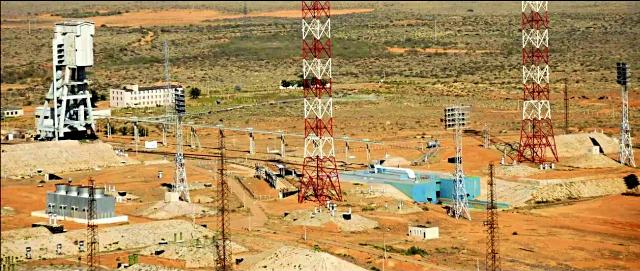 |
| The 70th anniversary of the establishment of the Baikonur cosmodrome. |
| Source: Valery Ageev |
Valery Ageev
